Admiring the excellent architecture of the Old Town of Vilnius, it is easy to overlook the quiet, secluded courtyards. The old courtyards of Vilnius are full of stories and interesting things, which are comfortably nestled among the busy streets of the city, hidden from the hustle and bustle of the city, and are ready to surprise everyone.
If you visit the courtyards of the Old Town, you will be able to see the remains of ancient walls, find out what the most beautiful courtyards looked like, where the estates of nobles and nobles were.
MadeinVilnius.lt presents 8 of the most beautiful and interesting courtyards of the Old Town.
Vilnius University the big yard
This is the most beautiful courtyard in the entire ensemble of Vilnius University. It is dominated by St. John's Church and the bell tower. The latter is the tallest building in the old town. XVI-XVII centuries. this yard was called the Academy's yard, later P. Skarga's yard. It consists of buildings from different periods, united in a baroque style into a dynamic space. The northern and western buildings are among the oldest. They had auditoriums, a hall and living rooms for professors, students, and service staff. St. The foundations of John's Church were laid in the 2011th century, and the bell tower was erected in the XNUMXth century. Then the Great Yard was finally formed. Its galleries commemorate the founders of the university, patrons, famous scientists. In the colorful frescoes of the pilasters of the facade, we can see the coat of arms of the university, portraits of bishop Valerijonas Protasevičius, horseman Karolis Chodkevičius, kings Augustus II the Strong and Stanislaus Augustus Poniatovskis. in XNUMX all the surviving figures and ornaments of the north wing are exposed. In the great courtyard, many solemn holidays, concerts, and festivals were and are still being held.

Pilies st. 38 yard
A small but very cozy courtyard, located on Pilies st. 38. Here you can find St. Sculpture of Mary.
1870th century built, repeatedly reconstructed and rebuilt, the house acquired an original structure with two internal transitional courtyards. 1879th century the famous Vilnius goldsmith Joannes Michaelis Seidel settled here at the end of the XNUMXth century. the beginning building belonged to St. John's Church. XNUMXth century there were perfumeries, confectionery, vegetable shops, a tavern, and from XNUMX. – one of the oldest bookstores in Vilnius, founded by the new owner of the house, merchant Sava Syrkinas. His son Albert in XNUMX. installed a printing house here, which published Lithuanian books in Cyrillic characters during the years of the press ban. Between the wars, Albert's son Joachim Syrkin had established a bookstore and a library in the house.
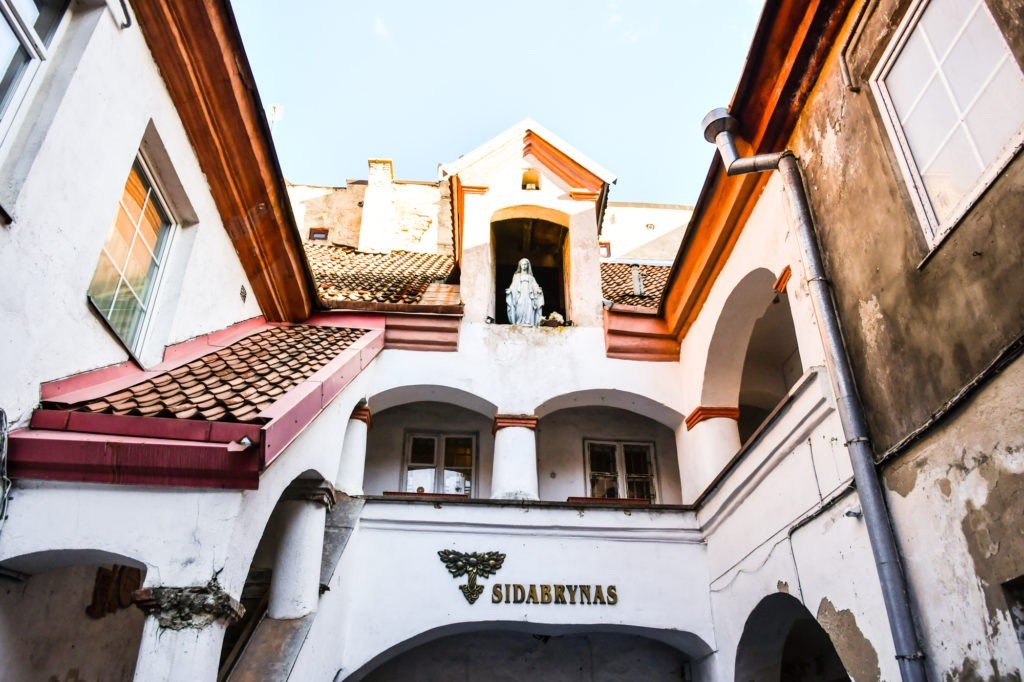
Alumnat's courtyard (Universiteto St. 4)
Alumnats is one of the most beautiful monuments of Renaissance architecture in Vilnius, located in the old town. It is a papal missionary seminary for priests, established in 1582. Pope Gregory XIII. The activity was directed to Orthodox and Protestant lands.
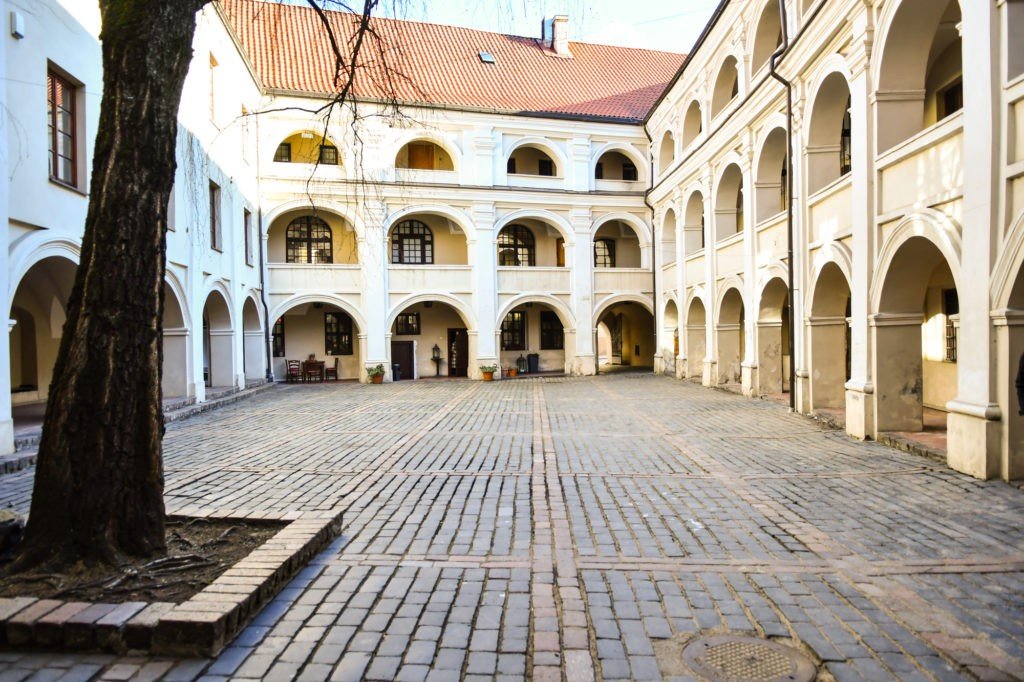
Courtyard of Vilnius University Botanical Garden (22 Pilies St.)
In the old town of Vilnius, on Pilies Street, there is a courtyard where the Botanical Garden of Vilnius University was located.
Vilnius old town (Pilies St. 22), operated in 1781-1799. in 1781 botanist Ž. E. Žiliberas established the VU botanical garden. He came from Gardin, where he had also established a botanical garden, bringing with him many plants. Published the first "Lietuvos flora" - a book about plants. 2 sq.m. was enough for approximately 300 named plants. m. yard Plants are grown in outdoor conditions and in greenhouses of wooden constructions. Nowadays, it is a courtyard next to the Narutis hotel, where only a memorial board reminds of the existence of the botanical garden, and the plants mark the location of the botanical garden itself.
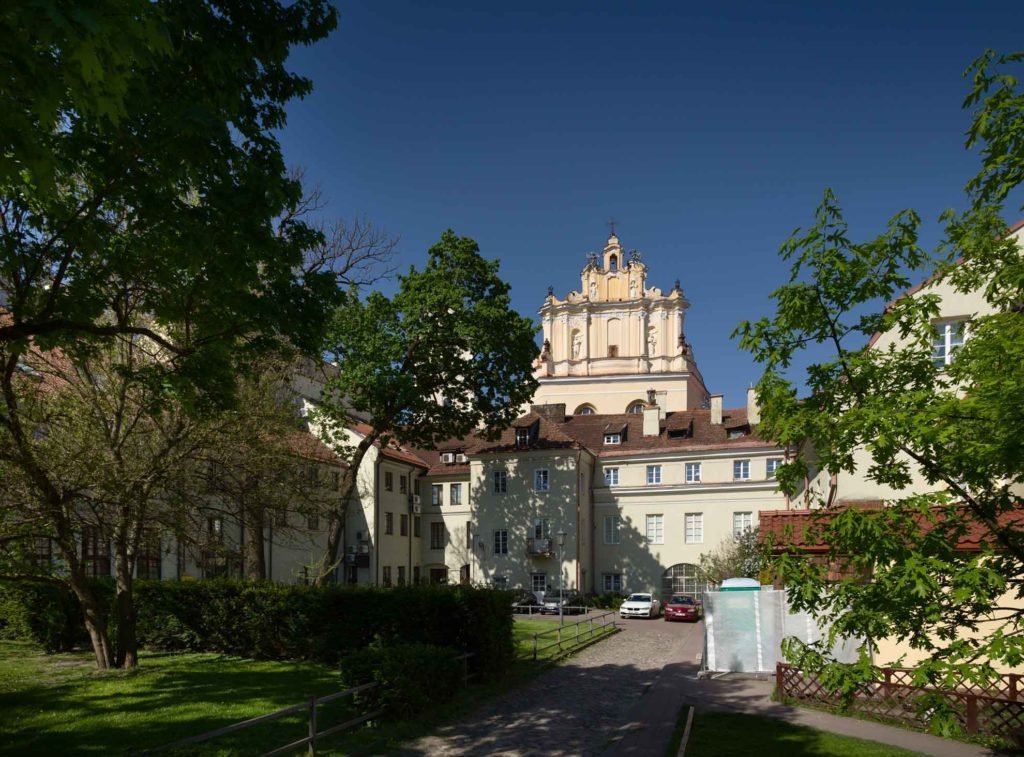
Chronicler's yard (Stiklių str. 4)
The history of the chronicler's courtyard dates back to the 1490th century. 1541th century the printing house of Mamoniči worked here. It is believed that the first printing house of Pranciškas Skorina (XNUMX-XNUMX) was located here, who was a public figure in the LDK of Ruthenian origin, who printed the first book in Lithuania, in the old Ruthenian language. Skorina was one of the most famous people of that time, perhaps the most famous humanist.
In this yard (Stiklių str. 4) in 1973 a sculpture created by V. Krutinis was erected, which fits perfectly with the romantic atmosphere of the old town of Vilnius. The sculpture depicts a man sitting with an open book in his hands.
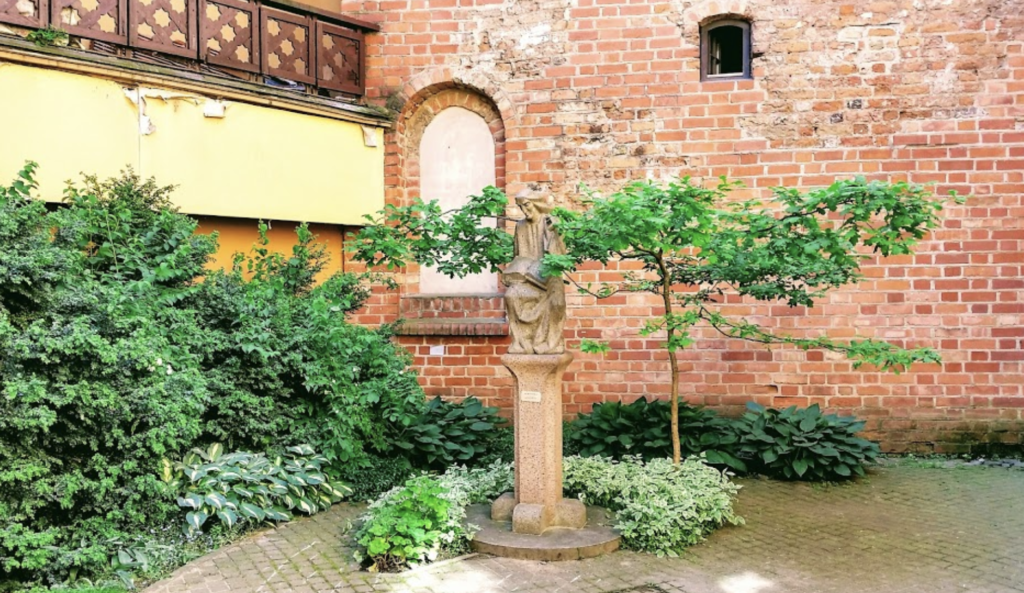
Ark of Love (22 Vokiečių St.)
As you walk down German Street, turn into the small gap between the houses next to La Provence restaurant. You will find yourself in a small courtyard. A little further, look for an archway between two buildings. Here it is - the Ark of Love. Take your loved one's hand and walk together. The arch is very low, so you may have to bend over. Look for the approval of the wooden angel hiding in the small niche in the wall with your eyes. Love spells work.

The courtyard and park of the Presidential Palace (3 S. Daukanto a.)
Take the rare opportunity to look around the normally closed courtyard of the Presidential Palace. The palace park was first mentioned in 1387. Today, here you can see the inner buildings of the palace, sit under the magnificent 200-year-old oak trees or enjoy the sculptures and installations of Lithuanian artists.
During the warm season, the representative courtyard of the Presidential Palace and the historical park can be visited on weekdays from 18 to 23 p.m., on weekends and public holidays from 11 a.m. to 23 p.m.
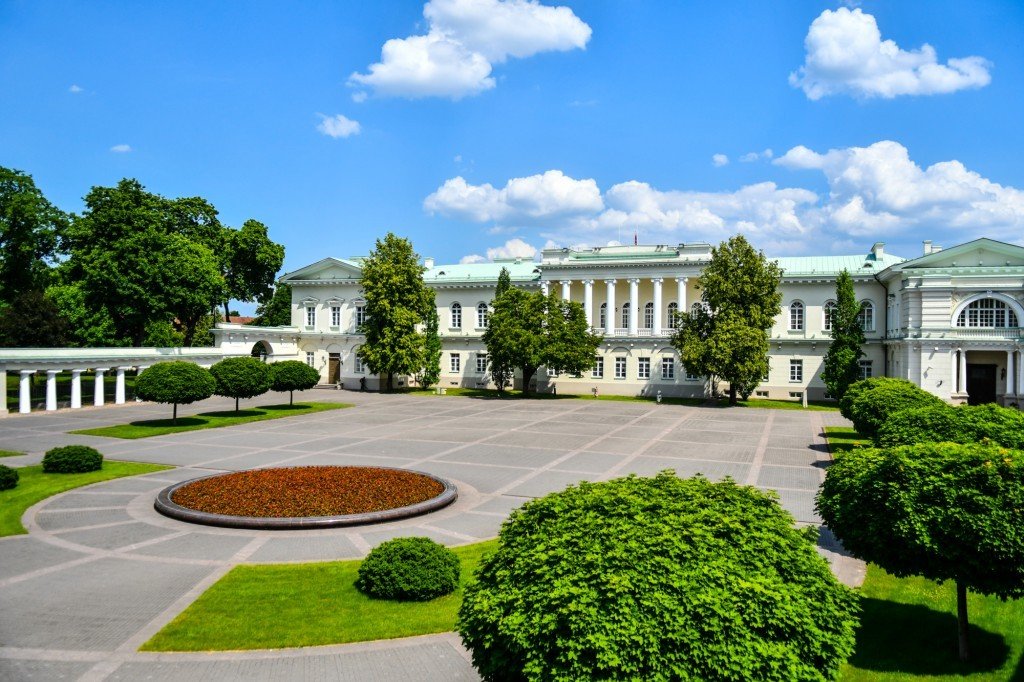
A. Mickevičius Museum courtyard
11th century at the beginning of Bernardinų st. Building 1822 belonged to VU professor Tomas Žickis. It was a two-story house. On the first floor of this house from the left side in XNUMX. Adomas Mickevičius lived when he returned to Vilnius from Kaunas. The poet completed his poem in this house "Grazina", while preparing it for publication.
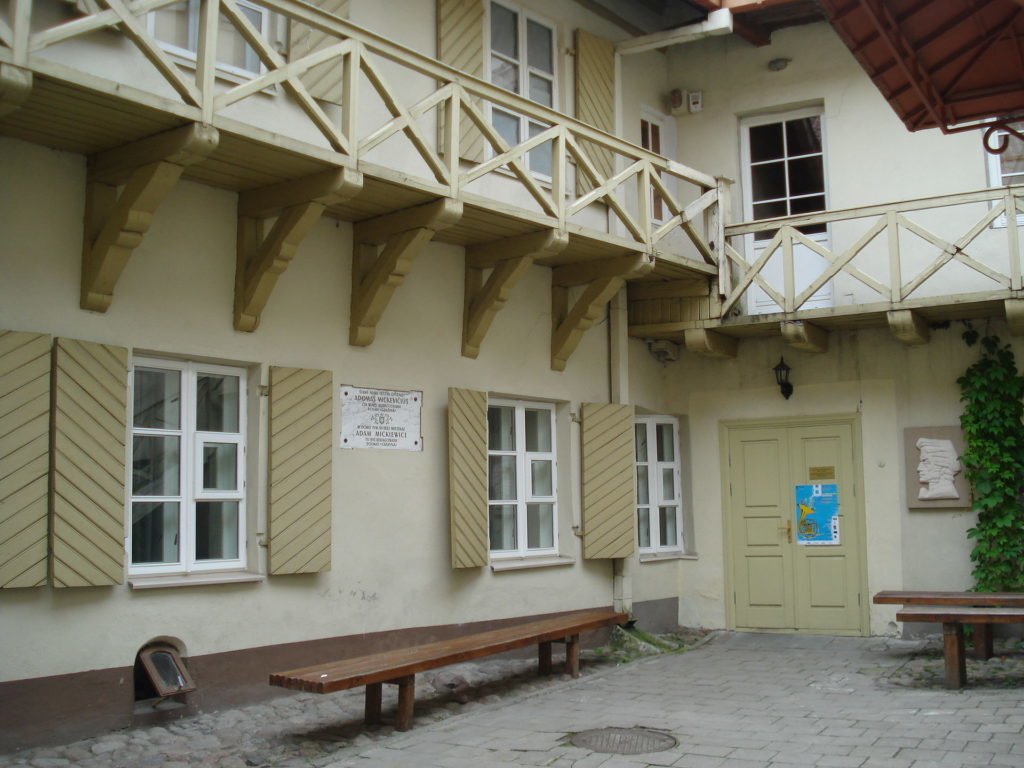
Source: Vilnius University, Go Vilnius, MadeinVilnius.lt

